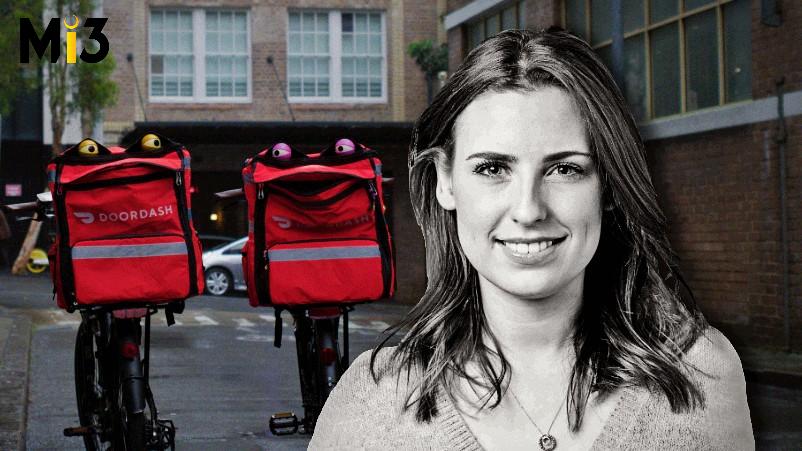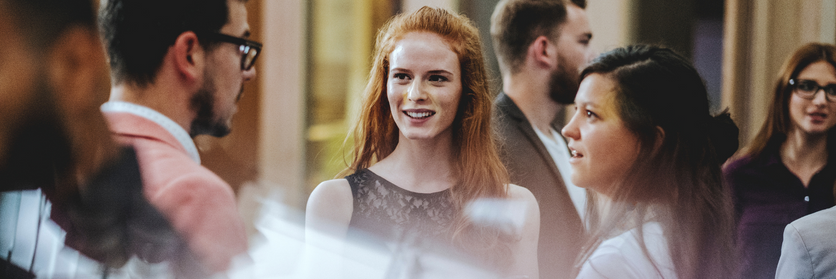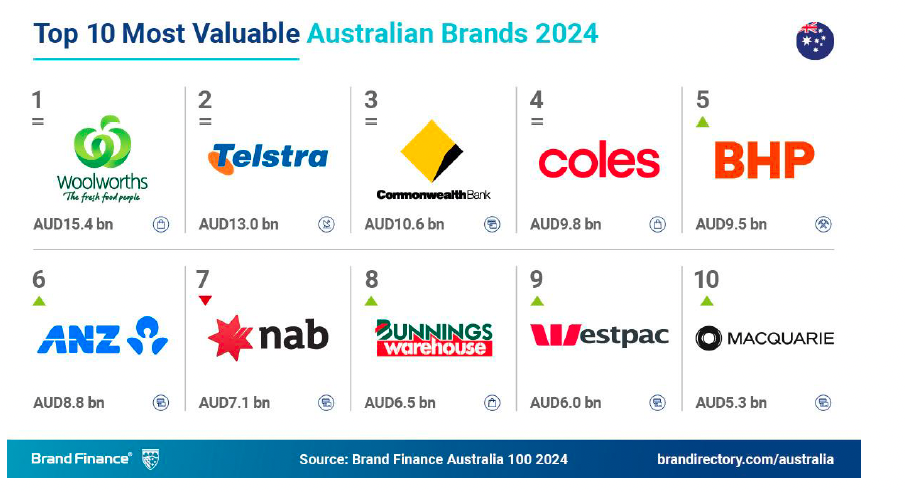‘Don’t f*ck it up is high on my list’: DoorDash goes hard on brand mascots, local creative in bid to boost preference, consideration – but hedges with retail performance multi-plays

What you need to know:
- In-camera puppetry featuring talking DoorDash animatronic bags complete with expressive eyes are taking centre stage in the new locally executed brand campaign for the challenger delivery marketplace aimed at building brand consideration, preference and distinctiveness in the Australian market.
- The 13 campaign films have been directed by Cannes Award-winning director, Jeff Low, who also directed Telstra ‘Better on a Better Network’ stop animation campaign. It’s also the first work to come out of DoorDash’s new relationship with creative agency, DDB Sydney.
- The campaign represents a big local brand investment for the DoorDash business, which recently hit 10 billion deliveries globally thanks to its pool of 20 million users and is finally also delivering a profit.
- Local head of brand, Madison Westall, also points to a number of key macro and consumer insights that have informed the work. These include the fact Australians are the quickest consumer contingent geographically to take up new verticals offered through its platform, even as they’re the most reticent to outsource the work to third parties.
- Walking the fine line between brand and performance is the job of modern marketing teams, says Westall, who argues every one of its new 13 campaign films is designed to deliver commercial impact.
Animatronic puppet bags with googly eyes and clips of Bob Katter to the global CMO – that’s how local a flavour the brand team at DoorDash are sprinkling on their work as they look to build consideration and more brand loyalty in the Australian market.
So says DoorDash head of brand, Madison Westall, who caught up with Mi3 following the debut of DoorDash’s new Australian brand platform and campaign, ‘Your Door to More’, on 23 September. The work brings to life DoorDash’s global brand moniker, ‘Your Door to More’ through a distinctly Australian-devised campaign execution.
It’s also the first work out of the partnership struck between DoorDash Australia and DDB Sydney in June. The creative agency replaced The Monkeys, now part of Droga5 ANZ, part of Accenture Song. Media remains with DoorDash’s longer standing global and local media agency of record, Wavemaker.
Notably, 13 films sit within the new campaign suite, all featuring animatronic puppeteers shot onsite in locations in Australia and directed by 2025 Cannes Grand Prix winner, Jeff Low (who directed Telstra’s stop animation campaign, ‘Better on a Better Network’). This delivery bag duo are set to become the new mascots for DoorDash, and are featured chatting to each other on the back of bikes about the stash they hold, complete with dynamic, human eyes. They’re brought to life through in-camera puppetry rather than animation, a move DDB Sydney creative director, Samuel Raftl, ascribed to making them more endearing while also honouring DoorDash’s grassroots heritage as a brand when it first launched in the US, then in Australia.
Westall agrees DoorDash’s scrappy start as a college startup at Stanford University, then its equally shoestrung launch in Australia in 2019 – the day the app turned on in Melbourne, the two founders had to pay a taxi driver $300 to deliver a kebab across the city – has fed into the work.
But DoorDash has clearly come a long way since then. 2024 was a breakout operating year for HQ, reporting a 20 per cent sales life and first-time profit. This year, it’s coughed up US$3.9 billion to buy out rival, Deliveroo, and chalked up 10 billion deliveries from 20 million users globally, buoyed by its other acquisition of Wolt. All this has pushed its presence to over 40 countries. Australian figures aren’t disclosed, but market estimates peg DoorDash at around 1 million active users and circa-18 per cent market share locally.
There’s been a lot on the local front too as DoorDash works to replicate its US model of delivering “basically anything that’s not nailed down” (per Westall), and extends what the marketplace delivers from takeaway to liquor, groceries, flowers, pets, beauty and more. Tentpole partnerships struck locally this year include an exclusive partnership with Aldi, then Costco, and more recently, KFC and Seven Rooms. These sit alongside a wider portfolio of partnerships with Dan Murphy’s, Chemist Warehouse, Virgin Velocity, Amazon and Afterpay.
Blurred brand image
“These things [partnerships] have all been so powerful for us,” says Westall. “But with each of those opportunities, which we’ve grabbed with both hands, the brand has blurred a bit. We sort of shape-shifted to meet the moment, but without a platform that could stretch and grow with us, we started to see a bit of a consideration challenge. Awareness is incredible, but Aussies kind of went, who are these guys? They didn’t really know what to make of us.
“It was high time to find an agency partner who could go the longhaul with us and cement ourselves with a platform that can stretch, grow and flex and really reflect back what we see in our customers and our audiences. Australia is so diverse, and what you can order on DoorDash is so diverse and a bit weird sometimes – a bit left of centre. We love that, and we love the honesty in it.
“So really the challenge to DDB was take us from the other guy, the other food delivery brand, we’re more than that. We’re a 24/7 life hack. We can be meaningfully helpful to busy Aussies. That’s where this latest platform was born.”
I also feel as a challenger brand that we’ve got lots of jobs to do, but one of them definitely is to be likeable. A lot of the time, we’re not competing against our competitors either, we’re just competing for people’s attention. They’ve got a lot on, so I think putting work out into the world that resonates is key.
The Katter quip
Being truly local in execution was foundational, Westall insists. “Our global CMO, Kofi [Amoo-Gottfied] is incredible, but he would be the first to say I want you to present me things I don’t understand – he’ll say, ‘I want it to be so local, I don’t understand’,” she says.
“So sometimes I’ll send him clips of Bob Katter and I’ll be like, just remember this is the Australia we’re a part of. Kofi will say, I don’t understand what you’re sending me but I love where your head is at. So global are very supportive of what we’re doing. Part of this campaign is launching our global ‘Your Door to More’, which is the global brand platform, but the execution is 100 per cent local. We should get one of those little stickers for that.”
On a potentially more strategic note than one rogue, socially conservative politician, Westall cites one data input for the brief being the fact Australians are the fastest adopters and stickiest customers of any across DoorDash’s global markets when it comes to new verticals available for delivery.
“We saw that as soon as we launched with the likes of Coles and IGA back in 2022,” she continues. “But there isn’t the Instacart kind of on-demand grocery solution in this market that there is in the US, for example. And we’re finding when we can solve a diverse mix of problems for our customers – whether that’s food delivery and grocery, or grocery and pharmacy, or food and alcohol – over a week, the more retentive they are. So we took that as a really strong signal of consumer need and product market fit, which has informed the way we’ve really doubled down and invested into selection expansion across more than restaurants.”
In addition, Westall points to a combination of ABS and other data showing Australians working more hours in more jobs than ever before, disproportionately affecting women.
“There’s this data showing how we don’t really have a village anymore; people are working older, the retirement age is extending and grandparents are still working. So we found again, young families have less time, have more pressure, are working more and have less support than ever before,” she says. “We felt more than ever, the average Australian family could use an extra pair of hands and the small fee we charge to deliver things or cross something off their lists is actually a really pragmatic value exchange for the time they get back.”
However, a counterpoint is Australians also seem to be reluctant to shivvy off jobs to a third party: Aussies report higher feelings of guilt when it comes to outsourcing tasks to delivery services than other markets.
“We still see the on-demand, ecommerce space in this country as quite nascent. We feel by leading the charge with greater new verticals expansion, moving from grocery into retail, that there’s a really solid pipeline to come and we can provoke the behaviour change in Australians,” says Westall.
Cue the puppets, extra oomph on creative, but also a campaign that talks to delivering pregnancy tests and nappies. “I also feel as a challenger brand that we’ve got lots of jobs to do, but one of them definitely is to be likeable,” adds Westall. “A lot of the time, we’re not competing against our competitors either, we’re just competing for people’s attention. They’ve got a lot on, so I think putting work out into the world that resonates is key.”
Brand and performance booster with constant optimisation
Completion rates and other creative benchmarking is therefore on Westall’s scorecard for measuring success. But don’t think for a second there isn’t a heavy commercial and performance skew underpinning these campaign efforts. It’s wall-to-wall branding, call-to-actions and partner name drops in each film.
As was also evident at the recent Amazon Upfronts event in Sydney, DoorDash has been putting a high-voltage commercial lens over its campaign work. The closed loop example shared onstage was the Amazon Dash Pass deal, which gives Amazon Prime members two years’ worth of free delivery, cashback and offers. Amazon has also struck a deal with DoorDash to bring takeaway and convenience food eating habits to sit alongside its shopper data. Under the partnership, DoorDash started with Prime video ads, then built a custom partnership for Nine Perfect Strangers, delivering more than double forecast impressions. From there, it expanded into twitch, extended into IMDB with display, then used Amazon DSP to go out across Amazon properties and into third-party sites.
In every case, the objective was to drive Dash Pass subscriptions, sign-ups and app downloads. DoorDash cited more Aussies redeeming their free Dash Pass each week, reach over nearly 4 million Australians, an average 97 per cent video completion rates, 4.6-point lift in consideration and a 16-point purchasing intent leap.
With the latest brand campaign launch, there’s been an upweighting of screens in the media mix, with the bags appearing on linear TV, streaming and YouTube. Westall also points to paid and organic social work coming online shortly.
Continuous media optimisation is another must to get in front of the right person at the right time. “We strike a fine balance between online and offline media, and performance and brand – I think all businesses walk that tightrope,” comments Westall. “Like all tech companies, we’re incredibly performance focused. DoorDash is the only job I’ve ever worked in where you get a scorecard at the end of every day.
“We assess performance based on how well we’re solving customers’ problems and essentially we take that data in real time and feed it back to Wavemaker, so there’s constant optimisation. Which makes us a difficult client, because things are always changing. But I think they’re changing for the better and we continue to see improvements quarter over quarter in terms of media efficiency and growth.”
What’s more, Westall describes every one of its 13 spots “driving a commercial purpose”. “Whether that be expanding customer perceptions of new vertical selection, supporting our exclusive partnership with KFC… which is quite disruptive in this market based on their previous delivery fee structure, or the fact we’re launching Aldi… a brand people love but haven’t been able to get on-demand. As best as we possibly could, we’re bridging brand and performance.”
Underneath this, consideration and brand preference are the big metrics Westall wants to move the needle on. “We’re obviously in a pretty crowded, competitive category, so preference matters and loyalty matters,” she says. “Then there are a bunch of other metrics I keep my beady eye on that are input metrics to the output goal. A few I hold in really high stead are ‘makes my life easier’, which we report on every month; if I can move that metric north, I know we are solving consumer problems, which I believe is the silver bullet for growth for our brand.”
Affordability in value proposition is another one. “Things like having fair delivery fees, is affordable, represents good value – I need to see those moving north as well to be sure we’re doing a good job of surfacing our affordability proposition,” says Westall.
While she wouldn’t provide specifics, Westall says those real-time dashboards shot up straight up from the day the new media went live. The watchout now for this brand marketer is to hold firm on campaign consistency in order to push the brand position long term.
“I keep saying to myself, iconic Australian campaigns aren’t built overnight, they’re built over time,” says Westall, with a nod to the fact too many marketers don’t give their creative and campaigns enough time to sweat and deliver compound brand benefits.
“And can I say, ‘don’t fuck it up’ is probably the big thing on my list.”





